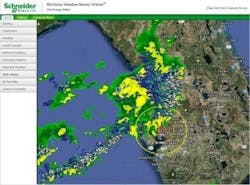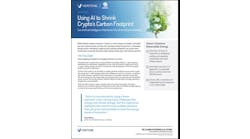Schneider Electric Software Predicts Lightening
When it comes to the weather, utilities and companies need to think big, bad, and ugly. We’ll see bigger weather events, more often, with heavier rains, flooding, snow or hot weather. And the events will last longer.
That’s the word from Jeff Johnson, chief science officer at Schneider Electric, where he prepares medium- and long-term weather forecasts.
Utilities and power providers need to harden their infrastructure in anticipation of this type of weather, he said.
“We’ve had a greater incidence in the last decade of extreme weather,” Johnson said. “Over the last number of years, warmer seasons tend to be extended. We are seeing more of an increased incidence of extreme dryness or wetness. Really heavy rain events are bigger and heavier, droughts are stronger than they’ve been in recent years. We’re seeing more extended periods of warm or cold weather. The warmth and cold tends to linger longer,” he said.
The weather patterns are moving more slowly, which means bad weather hangs around longer, Johnson said. He’s also seeing “clustering” of weather events.
“You may not have severe weather for a number of weeks, then you get a big outbreak–a lot of reports of tornadoes and events.” This has been a pattern especially over the last two years.
“Instead of severe weather events being spread out, we’re seeing more clustering of severe weather,” he said.
Is the big, bad, weather a function of greenhouse gas emissions? Partially, said Johnson.
“The planet has gotten warmer over the last 100 years, and it’s likely a contribution from natural cycles as well as human activity: greenhouse gas emissions and land-use changes such as cutting down forests and turning them into agriculture or creating more cities,” he said.
Everyone in the energy industry needs to be aware of the increased risks of these severe weather patterns, he said. Utilities, for example, need to harden their infrastructure and consider smart grid systems that allow them to quickly identify the causes of outages.
For example, after Hurricane Sandy, utilities and others became more aware of the dangers of flooding. “They needed to build up higher flood walls and protect from storm surges.” If planners are wondering whether hurricanes like Sandy will strike again, the answer is yes.
The message is clear: Put on your rain boots, grab your umbrellas, and start investing in software and hardware that provides protection against outages, floods, heat and drought.








